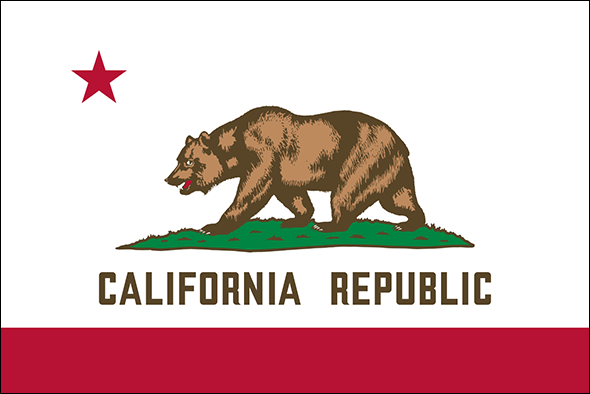Recording California
The Preamble was short and sweet:
Whereas the people of California have presented a constitution and asked admission into the Union, which constitution was submitted to Congress by the President of the United States, by message dated February thirteenth, eighteen hundred and fifty, and which, on due examination, is found to be republican in its form of government :
And the paragraph that followed was just as short and sweet:
Be it enacted by the Senate and House of Representatives of the United States of America in Congress assembled, That the State of California shall be one, and is hereby declared to be one, of the United States of America, and admitted into the Union on a equal footing with the original States in all respects whatever.1
And with that, 171 years ago today, California was officially admitted to the Union as the 31st state.

It brought with it, according to the census conducted that year, some 92,597 men, women and children,2 a history of Spanish and Mexican law,3 and a starring role in the Compromise of 1850 (which wasn’t much of a compromise and didn’t work anyway).4
Oh, and gold, and a Gold Rush.
Which, of course, led to a whole lot more people in a whole big hurry. So many more that California did what it had to: “To obtain a more reliable picture of the population, the State of California conducted its own census in 1852, the only one in the state’s history.”5 The count was actually called for as part of California’s 1849 Constitution, and it was the only one ever conducted.
And, yes, genealogists can access it online today. It’s online at Ancestry asnd an index is online at FamilySearch.
So… what other kinds of genealogical goodies did California bring with it?
Oh, let’s see here.
How about special records of women? In large part arising from its Spanish-law roots, California never followed the British common law limiting women to dower and the like. Instead, women early on had far more rights than their common-law-counterpart sisters. By 1852, there was a whole legal system for women to engage in business without a man or husband involved6 — and that produced a raft of records of these female sole traders.7
Or special records of voters? That influx of new residents led to laws to control voting and voter registrations8 — and to a whole set of records called the Great Registers, with tons of information on voters over decades of California history.9
Or special records of orphans? Like the collection of records of support to San Francisco orphans and half-orphans online at FamilySearch, maybe?
Or…
Yep, plenty of good stuff for genealogists in that 31st state.
Happy birthday, California.
Cite/link to this post: Judy G. Russell, “The 31st state,” The Legal Genealogist (https://www.legalgenealogist.com/blog : posted 9 Sep 2021).
SOURCES
- “An Act for the Admission of the State of California into the Union,” 9 Stat. 452 (9 Sep 1850). ↩
- Superintendent of the U.S. Census, The Seventh Census of the United States (Washington, D.C. : Public Printer, 1850), Table I at ix; digital images, U.S. Census Bureau (https://www2.census.gov/prod2/decennial/documents/1850a-01.pdf : accessed 9 Sep 2021). ↩
- See generally “California’s Legal Heritage,” University of California, Berkeley, School of Law (https://www.law.berkeley.edu/ : accessed 9 Sep 2021). ↩
- “Compromise of 1850: Primary Documents in American History,” Library of Congress Research Guides (https://guides.loc.gov/ : accessed 9 Sep 2021). ↩
- “Using the 1852 California State Census,” PDF research guide, California State Library (https://www.library.ca.gov/ : accessed 9 Sep 2021). ↩
- See § 1, “An Act to authorize married women to transact business in their own name as sole traders,” 12 April 1852, in Theodore H. Hittell, The General Laws of the State of California: from 1850 to 1864, Inclusive (San Francisco : Bancroft & Co., 1872), I: 1024; digital images, Google Books (http://books.google.com : accessed 9 Sep 2021). ↩
- See Judy G. Russell, “California’s sole traders,” The Legal Genealogist, posted 20 Feb 2013 (https://www.legalgenealogist.com/blog : accessed 9 Sep 2021). ↩
- Chapter CCLXV, “An Act to provide for the registration of the citizens of this State, and for the enrolment in the several election districts of all the legal voters thereof, and for the prevention and punishment of frauds affecting the elective franchise,” in The Statutes of California … 1865-6 (Sacramento : O.M. Clayes, State Printer, 1866), 288; digital images, Google Books (http://books.google.com : accessed 9 Sep 2021). ↩
- See “Really Great Registers,” The Legal Genealogist, posted 5 Sep 2017. ↩



Thank you for reminding this 4th generation California native of the Admission of our great state and some of the special records for genealogical research. School children in the past celebrated the day off as Admission Day. Made for a shorter first week back to school after Labor Day. My own children did not celebrate this during the 90’s and 00’s and I forgot. Morning newscast in the State’s Capitol didn’t mention it, but you did. So, thanks!